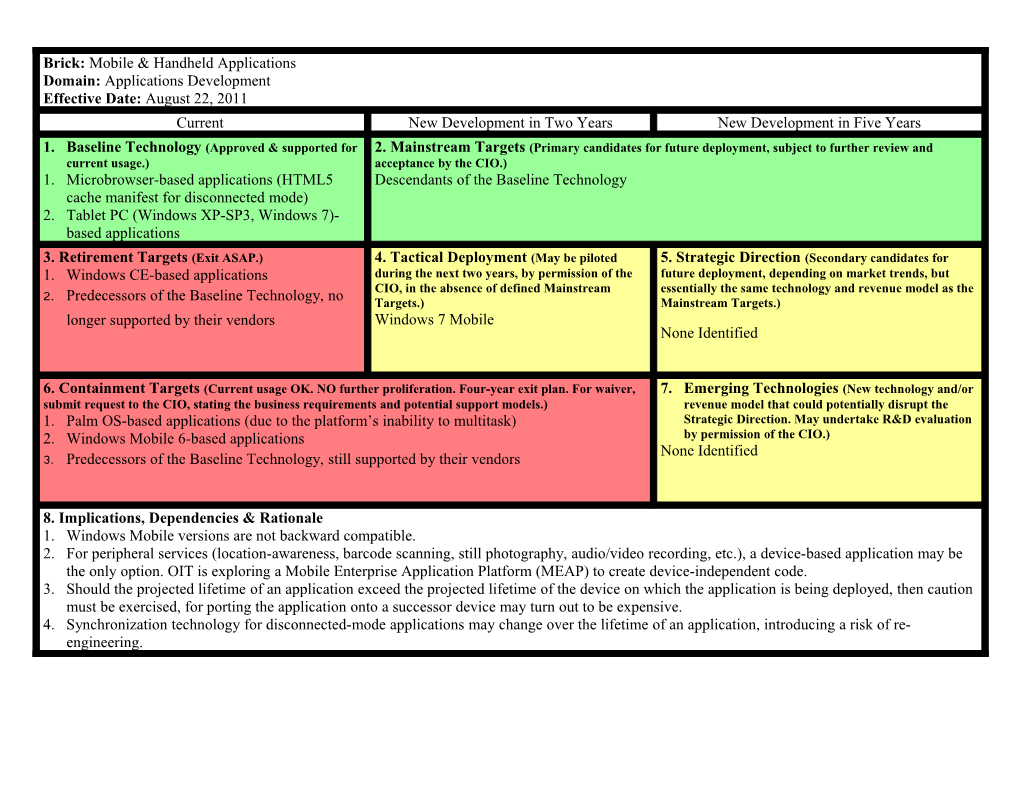Brick: Mobile & Handheld Applications
Domain: Applications Development
Effective Date: August 22, 2011
Current / New Development in Two Years / New Development in Five Years
1. Baseline Technology (Approved & supported for current usage.)
1. Microbrowser-based applications (HTML5 cache manifest for disconnected mode)
2. Tablet PC (Windows XP-SP3, Windows 7)-based applications / 2. Mainstream Targets (Primary candidates for future deployment, subject to further review and acceptance by the CIO.)
Descendants of the Baseline Technology
3. Retirement Targets (Exit ASAP.)
1. Windows CE-based applications
2. Predecessors of the Baseline Technology, no longer supported by their vendors / 4. Tactical Deployment (May be piloted during the next two years, by permission of the CIO, in the absence of defined Mainstream Targets.)
Windows 7 Mobile / 5. Strategic Direction (Secondary candidates for future deployment, depending on market trends, but essentially the same technology and revenue model as the Mainstream Targets.)
None Identified
6. Containment Targets (Current usage OK. NO further proliferation. Four-year exit plan. For waiver, submit request to the CIO, stating the business requirements and potential support models.)
1. Palm OS-based applications (due to the platform’s inability to multitask)
2. Windows Mobile 6-based applications
3. Predecessors of the Baseline Technology, still supported by their vendors / 7. Emerging Technologies (New technology and/or revenue model that could potentially disrupt the Strategic Direction. May undertake R&D evaluation by permission of the CIO.)
None Identified
8. Implications, Dependencies & Rationale
1. Windows Mobile versions are not backward compatible.
2. For peripheral services (location-awareness, barcode scanning, still photography, audio/video recording, etc.), a device-based application may be the only option. OIT is exploring a Mobile Enterprise Application Platform (MEAP) to create device-independent code.
3. Should the projected lifetime of an application exceed the projected lifetime of the device on which the application is being deployed, then caution must be exercised, for porting the application onto a successor device may turn out to be expensive.
4. Synchronization technology for disconnected-mode applications may change over the lifetime of an application, introducing a risk of re-engineering.
Mobile Applications Brick
